- WALES, HRH PRINCE OF
- Neg. No: GP (L) 1335
- Neg. Size: 15"x12"
- Neg. Date: 03-07-1897


- Sitter: King Edward
VII (1841-1910), when Prince of Wales.


Sketch published in The Queen, 10 July 1897
Image displayed in:
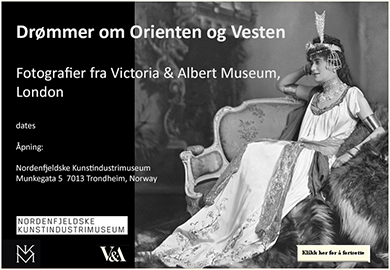
Albert Edward (Bertie), as he was known until he succeeded to the throne, in 1897 was in the unfortunate position of being 56 and still prevented by his mother, Queen Victoria, from playing any role in state affairs. She initially held the shock and horror felt upon the discovery of his romance with an Irish actress in 1861 responsible for the death of her beloved husband Prince Consort. She despised the fast life led by her son and his friends in the “Marlborough House set”, which was named after Edward’s residence in London. For all the misgivings expressed about his capabilities and morals by the press upon his accession, he proved to be not only a popular, but also a dutiful and wise monarch.
The Prince’s costume as Grand Master of the Knights Hospitallers of Malta, was made by the theatrical costumier, Monsieur Alias of Soho Square. His wig, made by Mr. Clarkson, was reputed to be “the lightest ever made, weighing barely half an ounce.”
Much less elaborate than some of the other guest’s costumes, the prestige of the Prince of Wales meant that almost all of the many published reports described his clothing in minute detail way beyond the ken of even a hardy society reporter - and in such similar terms that this presupposes a printed description handed out by Monsieur Alias.
The Daily Telegraph contained one of the more detailed accounts:
“[he] was attired in a rich dress of the Elizabethan period, carried out in black and silver. The doublet or pourpoint was of Genoese velvet, with silver woven in. The trunks were grey silk, with over-straps of velvet wrought with silver, the boots high turreted and of black leather, with large rowel spurs and spur-straps.
The sword-belt was a mass of black velvet with steel mountings, and the mantle of black velvet had the White Cross of Malta on one shoulder.
The hat was high, rather of the Spanish than the English style of that day. It was of black velvet and embroidered with jet, while at one side was a white plume of ostrich feathers. In front was a Maltese Cross in diamonds.
The riband of the Order of the garter on a palaco riband was worn. the Prince looked as if he had walked out of a splendid masterpiece by Velasquez., from the pourpoint of black epingle velvet, richly embroidered in steel, embroidered with rubies and beads of steel and jet, with passementarie of jet - to the bejewelled cross-handled sword, and the jewelled cross of Malta and Order of the Garter round his neck.”
The image was registered for copyright with a much simpler accompanying description “Photograph from life of H.R.H. Prince of Wales, full length standing, in fancy costume, left hand on hilt of sword.”
The Templars would have been familiar to Edward’s contemporaries from the Sir Walter Scott’s 1819 novel Ivanhoe and Sir Arthur Sullivan’s grand opera of the same name - at whose first performance in 1891 the Prince of Wales was present.
As the royal pair were the last to arrive at the Ball, and were then shown to a dais from which they observed the various processions of guests entering the saloon of Devonshire House, this image must have been made in the photographer’s tent in the small hours of the morning – well after the Prince’s favourite bedtime of half-past midnight.
Glory to those who battle for the Cross, And most to those, the bravest and the best, Wonder of land and sea, of east and west, Knights of the Holy Order of the Temple.
Sir Arthur Sullivan, Ivanhoe, Act I,
libretto by Julian Sturgis, 1st performed 1891 |
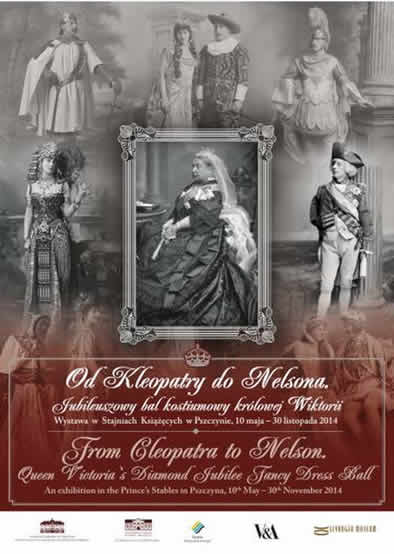
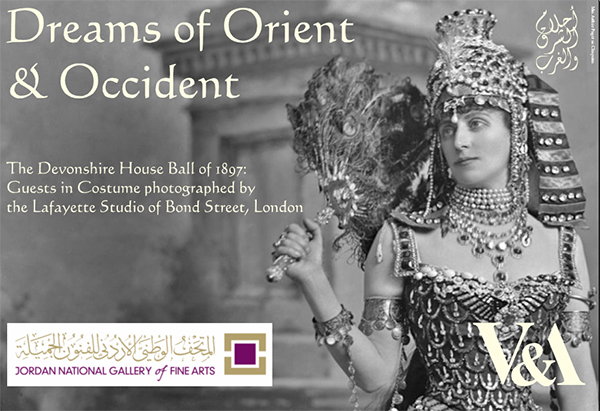
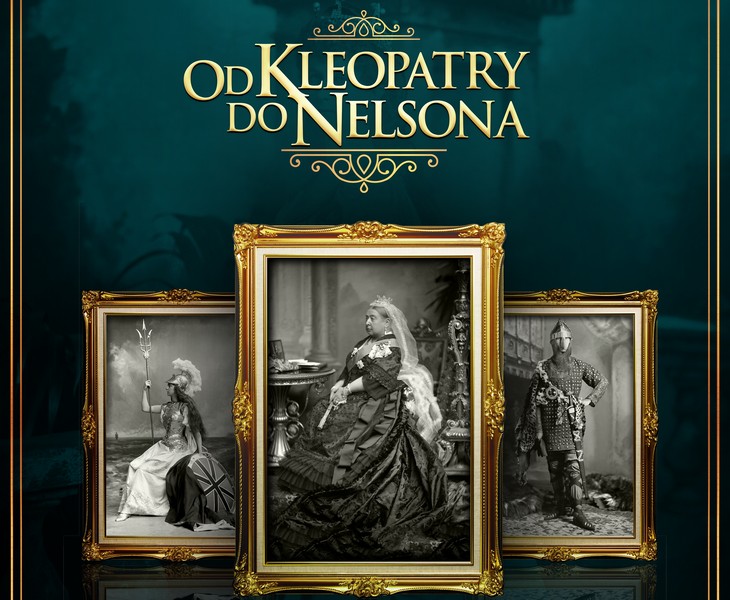
- Biog: Reigned
1901-1910.Role:
Grand Master of the Knights Hospitallers of Malta.
Date: 3 July 1897.
Occasion: The Devonshire
House Ball, 2 July 1897.(1)
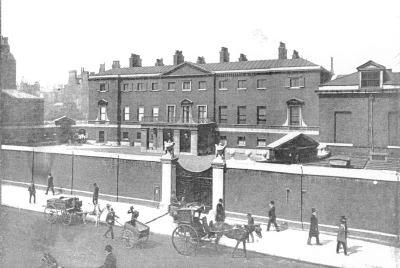 Location:
Devonshire House, Piccadilly, London, W. Location:
Devonshire House, Piccadilly, London, W.
Descr: FL standing.
Costume:
- "Pourpoint of black Epingle
velvet, richly embroidered steel and black jet tiny beads, with passementarie
of jet. Trunks formed of bands of black Epingle velvet embroidered
steel over full bouillonne of steel grey silk. Mantle of black Sicilian
silk with white cross of Malta. Haute de Chausse, black silk sword
belt of black velvet with steel mountings. Sword, black scabbard,
steel belt, with cross of Malta in white enamel. High turretted top
boots. Crispin gloves, hat and feathers with diamond cross of Malta.
Order-Ribbon of Order of Malta, with jewelled cross of Malta. Order
of the Garter, with pale blue ribbon round neck. Ruff." (Description
supplied by Alias, The Echo, 3 July 1897, p 1f).(2)
Costume
Supplier: Alias, 36 Soho Square, London, W. .(3)
Orders,
Decorations & Medals: Badge of a [Knight of Justice or Knight
of Honour and Devotion] of The Sovereign Military Hospitaller Order of
Saint John of Jerusalem, of Rhodes and of Malta (Catholic).
Furniture
& Props: Painted backdrop with 'baronial fireplace'; studio
Persian rug.
This
inset will give some idea of how widely details of The Devonshire
House Ball were reported in the press.
The similarity
of costume descriptions in various newspapers and journals
might suggest that guests and / or costumiers had sent out
some form of press release with details of their costumes,
as some of the detail given in these reports cannot have been
written from a fleeting vision of the guests, and there are
no reports of any members of the press being present at the
ball itself. However, The Echo gives a clue
inasmuch as it states that "we are indebted [to Monsieur
Alias] for the following details of some of the costumes worn
by the more important personages."

- The Constitution Atlanta,
G.A. July 2nd 1897
- The Prince of Wales,
as Henry of Navarre [sic]

- The Daily Chronicle,
July 3rd 1897, p. 7, col. 7
- The Prince of Wales,
as Grand Master of the Knights Hospitallers of Malta, wore
a doublet of black brocaded velvet, with the white crosss
of the Order on the breast, and trunks of black satin slashed
with grey. The sword handle, in the form of a cross, was jewelled,
and the Order of St. John of Jerusalem was worn.

- The Daily Graphic,
July 3 p. 10, illus. 1
- The Prince of Wales as
grand Master of the Knights Hospitallers of Malta.
- p. 13. col. 1
- Under list of Alias designs.
- Prince of Wales - Grand
Master of the Knights Hospitallers of Malta.

- The Daily News,
July 3rd 1897, p. 5, col. 6
- The Prince of Wales,
as Grand Master of the Knights Hospitallers of Malta, wore
a doublet and trunks of black Genoese velvet, the latter slashed
with grey. On the left breat the Maltese Cross was embroidered
in white satin, and his Royal Highness wore the Orders of
Malta and the Garter. His narrow high hat was encircled by
a jewelled chain, and bore the cross in front, with white
plumes floating at the back, and he wore black velvet hose
and high black turretted boots, St. Crispin gloves, and a
velvet cape embroidered with this cross.

- The Daily Telegraph,
July 3rd 1897, p. 9, col. 7
- The Prince of Wales as
Grand Master of the Knights Hospitallers of St. John of Jerusalem
and Chevalier of Malta, was attired in a rich dress of the
Elizabethan period, carried out in black and silver. The doublet
or pourpoint was of Genoese velvet, with silver woven in.
The trunks were grey silk, with over-straps of velvet wrought
with silver, the boots high turreted and of black leather,
with large rowel spurs and spur-straps. The sword-belt was
a mass of black velvet with steel mountings, and the mantle
of black velvet had the White Cross of Malta on one shoulder.
The hat was high, rather of the Spanish than the English style
of that day. It was of black velvet and embroidered with jet,
while at one side was a white plume of ostrich feathers. In
front was a Maltese Cross in diamonds. The riband of the Order
of the garter on a palaco riband, were worn. the Prince looked
as if he had walked out of a splendid masterpiece by Velasquez.

- The Echo, July
3rd 1897, p. 1, col. 6
- To M. Alias, of Soho-Square,
we are indebted for the following details of some of the costumes
worn by the more important personages...
- The Prince of Wales as
Grand Master of the Knights Hospitaller of Malta. (Elizabethan
period). Pourpoint of black Epingle velvet, richly embroidered
steel and black jet tiny beads, with passementarie of jet.
Trunks formed of bands of black Epingle velvet embroidered
steel over full bouillonne of steel grey silk. Mantle of black
Sicilian silk with white cross of Malta. Haute de Chausse,
black silk sword belt of black velvet with steel mountings.
Sword, black scabbard, steel belt, with cross of Malta in
white enamel. High turretted top boots. Crispin gloves, hat
and feathers with diamond cross of Malta. Order-Ribbon of
Order of Malta, with jewelled cross of Malta. Order of the
Garter, with pale blue ribbon round neck. Ruff.

- The Irish Times,
July 3rd 1897, p. 8, col. 3
- The Prince of Wales as
Grand Master of the Knights Hospitallers of Malta, wore a
doublet of black brocaded velvet, with the white cross of
the Order on the breast, and trunks of black satin, slashed
with grey, and there were high turreted black kid boots. The
sword handle, in the form of a cross, was jewelled and the
Order of St.Jude of Jerusalem was worn.

- The Morning Post,
July 3rd 1897, p.7, col.6
- ... the Prince of Wales
in the costume of a Knight Hospitaller of Malta, a black velvet
dress with a high crowned hat.
- p 7e
- The Prince of Wales -
Knights Hospitaller of Malta. Black velvet, with large Maltese
crosses of white satin worked on the cloak and brocaded doublet;
trunks of velvet slashed with black satin; high crowned hat
with large Maltese cross in diamonds in the front, white ostrich
feathers at the back, and a silver chain round the crown;
high boots to match.

- New York Daily Tribune,
July 3rd 1897, p. 7, col. 2
- The Prince of Wales was
dressed as a Knight Hospitaller of Malta, in black velvet,
with Maltese crosses in white satin worked on his cloak, and
a satin brocade doublet; velvet trunks slashed with black
satin, a high-crowned hat with a large Maltese cross in diamonds
in front and white ostrich plumes at the back. Around the
hat was a silver chain. His Royal Highness wore the high boots
which matched the costume.

- The New York Herald,
3 July 1897, p 1e
- The Prince of Wales was
dressed as a Knight Hospitaller of Malta, in black velvet
with Maltese crosses in white satin worked on his cloak, and
a satin brocade doublet; velvet trunks, slashed with black
satin; a high crowned hat, with a large Maltese cross in diamonds
in front, and white ostrich plumes at the back. Around the
hat was a silver chain. His Royal Highness wore the high boots
which matched the costume.

- Pall Mall Gazette,
July 3rd 1897, p. 7, col. 2
- The Prince of Wales as
a Grand Master of the Knights Hospitallers of Malta, in the
time of Elizabeth, had chosen a costume of black velvet slashed
with steel-grey silk and embroidered with steel and jet, the
white cross of Malta on his Mantle of black silk, and a black
hat and feathers, with a diamond Maltese cross.

- St. James's Gazette,
3 July 1897, p 8b
- The Prince of Wales was
noble habited as Grand Master of the Knights Hospitallers
of Malta in the Elizabethan period wearing black velvet embroidered
in steel and jet, the blue ribbon of the Garter around his
neck.

- The Standard,
July 3rd 1897, p. 4, col. 1
- His Royal Highness wore
a very becoming costume - especially appropriate in view of
the activity he always displayed in charitable works - the
dress of a Grand Master of the Knights of St. John of Jerusalem.
The pourpoint was of black velvet, embroidered with rubies
and beads of steel and jet. The trunks were of similar material,
ornamented with steel. His sword belt also was of black velvet
with steel mountings, while the shaft of the sword was a Maltese
cross enamelled in white. Top boots, Crespin gloves, hat and
feathers, and mantle of black Sicilian silk, with White Cross
of Malta, completed the attire. His Royal Highness wore the
diamond Cross of Malta, and the Orders of the Sartu and Malta.

- The Times, 3 July
1897, p 12b
- The Prince of Wales as
Grand Master of the Knights Hospitaller of Malta. (Elizabethan
period). Pourpoint of black Epinglé velvet, richly embroidered
steel and black jet tiny beads, with passementarie of jet.
Trunks formed of bands of black Epinglé velvet embroidered
steel over full bouillonné of steel grey silk. Mantle of black
Sicilian silk with white cross of Malta. Haute de chausse,
black silk sword belt of black velvet with steel mountings.
Sword, black scabbard, steel belt, with cross of Malta in
white enamel. High turretted top boots. Crispin gloves, hat
and feathers with diamond cross of Malta. Order-Ribbon of
Order of Malta, with jewelled cross of Malta. Order of the
Garter, with pale blue ribbon round neck. Ruff.

- The Washington Post,
3 July 1897, p 1b
- The Prince of Wales was
dressed as a Knight Hospitaller of Malta, in black velvet
with Maltese crosses in white satin worked on his cloak, and
a satin brocade doublet, velvet trunks slashed with black
satin, a high crowned hat, with a large Maltese cross in diamonds
in front and white ostrich plumes at the back. Around tha
hat was a silver chain. He wore the high boots whcih matched
the costume.

- The Westminster Gazette,
July 3rd 1897, p. 5, col. 1
- The Prince of Wales looked
a very genial and easy-going Grand Master of the Knight Hospitaller
of Malta. The black dress, with touches of white, was distinguished,
and made a good foil to the fairy-like dress of the Princess...

- The Daily Graphic,
July 5th 1897, p. 8, col. 1
- The Prince of Wales as
the Grand Master of the Knights Hospitallers of Malta, was
in black velvet embroidered in jet and steel and slashed with
grey silk. A white ruff, the blue ribbon of the Garter, and
the Order of St. John of Jerusalem relieved the sombre character
of the dress.

- Truth, July 8th
1897, p. 108, col. 1
- The Prince of Wales,
as Grand Master of the Knights Hospitallers of Malta, in black
velvet and white satin, led the Princess to the dais prepared
for her, and the glittering processions began to file past,
according to their historic period and date.
- p 108b
- Alias dressed the Prince
of Wales.

- Black and White,
July 10th 1897, p.39, laf. pic. 1
- The Prince of Wales as
Grand Master of the Knights Hospitallers of Malta.
- p.56, col. 1
- The Prince of Wales was
most elegant in black velvet embroidered in steel and a ruff.
His costume was made by Alias,

- The Clarion, 10
July 1897, p 1b
- ... the Prince in high
turreted black kid boots, as a Knight of Malta;

- The Court Circular,
July 10th 1897, p. 624, col. 1
- The Prince of Wales had
chosen a very dignified and becoming dress, and looked exceedingly
well in black velvet, slashed with grey satin and embroidered
with steel and jet, as a Grand Master of the Knights Hospitallers
of Malta.

- The Court Journal,
July 10th 1897, p. 1247, col. 2
- The Prince of Wales,
who assumed the character with great dignity, appeared as
a Knight Hospitaller of Malta in black velvet with white satin
Maltese crosses; the trunk and doublet brocaded with satin,
3 Maltese cross of diamonds, and a high-crowned hat.

- The Gentlewoman,
July 10th 1897, p. 57, col. 1
- H.R.H. The Prince of
Wales was very appropriately attired as Grand Master of the
Knights Hospitallers of Malta (Elizabethan period), in a pourpoint
of black epingle velvet, richly embroidered steel and black
jet; trunks formed of bands of black epingle velvet, embroidered
steel; mantle of black Sicilian silk, with white cross of
Malta; high turreted top boots; crispin gloves, hat and feathers
with diamond cross of Malta. Orders, ribbon of Order of Malta,
with jewelled cross of Malta. Order of the Garter, with pale
blue ribbon round neck and ruff.

- Lady's Pictorial,
July 10th 1897, p. 50, col. 2
- The Prince of Wales chose
admirably when he settled to represent the Grand Master of
the Knights Hospitallers of St. John of Jerusalem and Chevalier
of Malta. Truly picturesque and dignified looked His Royal
Highness in his Elizabethan dress of black velvet embroidered
in steel and jet as a doublet, trunks of grey silk slashes
with black velvet straps wrought with steel; sword belt of
steel embroidered velvet, the sword in a black velvet steel-mounted
scabbard. His Royal Highness's black silk mantle had the white
cross of Malta over one shoulder and the hat had a similar
cross in diamonds in front, and was trimmed with white plumes.
There were high black turreted boots and large spurs and spur
straps and Crispin gloves; and then the Prince wore the real
orders of St. John of Jerusalem, Malta, and the Garter.

- The Queen, July
10th 1897, p. 65, illus. 1
- The Prince of Wales,
as Grand Master of the Knights Hospitaller of Malta (Elizabethan
period) - Pourpoint of black epingle velvet, richly embroidered
steel and black jet tiny beads, with passementerie of jet;
trunks formed of bands of black epingle velvet, embroidered
steel over full bouillone of steel-grey silk; mantle of black
Sicilian silk, with white cross of Malta; hauts de chasse,
black silk; sword belt of black velvet with steel mountings;
sword, black scabbard, steel belt with Cross of Malta in white
enamel; high turreted top-boots; Crispin gloves, hat and feathers;
with diamond cross of Malta; Order, ribbon of Order of Malta
with jewelled cross of Malta; Order of the Garter, with pale
blue ribbon round neck; ruff. Made by Alias, 36 Soho Street,
W.
|
|

Registered photographer:
James Stack Lauder (1853-1923), trading as 'J. Lafayette', 179 New Bond
Street, London, W.
Evidence of photographer at
work: Extensive retouching work on the negative to the legs.
No of poses: 1.
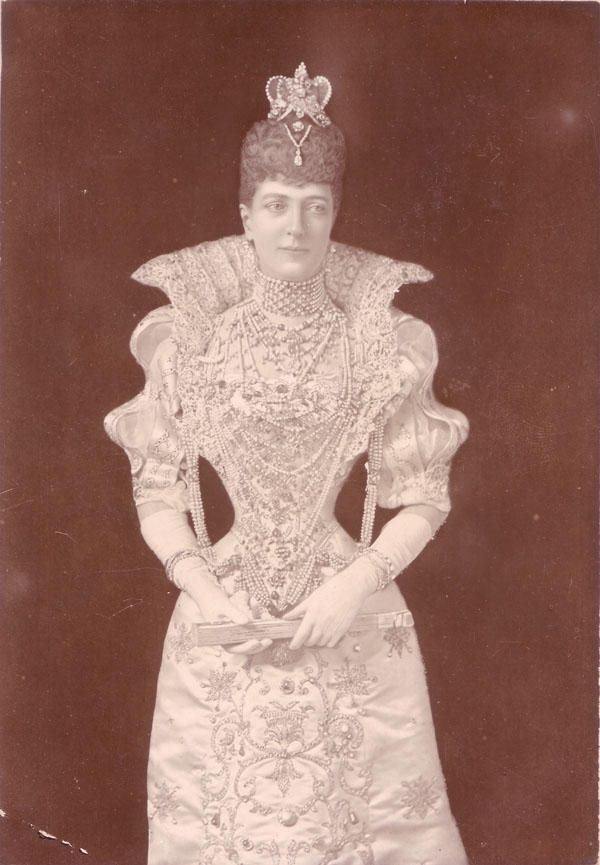 |
| Queen
Alexandra 1893 |
Copyright:
V&A
All
images on this site are copyright V&A. For further information
on using or requesting copies of any images
please contact the V&A Picture Library: vaimages@vam.ac.uk
including the URL of the relevant page
Provenance: Pinewood Studios; acquired 1989.

References:
Biog: Dictionary
of National Biography; Hugh Montgomery-Massingberd ed., Burke's
Royal Families of the World, Vol I, London, 1977, p 308-309.
Occasion: Sophia
Murphy, The Duchess of Devonshire's Ball, London, 1984.
Role and Costume:
The Daily Chronicle, 3 July 1897, p 7g; The Daily
Graphic, 3 July 1897, p 10 [line drawing]; The Daily
News, 3 July 1897, p 5a; The Daily Telegraph,
3 July 1897, p 9g; The Echo, 3 July 1897, p 2f;
The Irish Times, 3 July 1897, p 8c; The Morning
Post, 3 July 1897, p 7d; The New York Daily Tribune,
3 July 1897, p 7b; The New York Herald, 3 July 1897, p 1e; Pall
Mall Gazette, 3 July 1897, p 7b; St. James's Gazette,
3 July 1897, p 8b; The Standard, 3 July 1897,
p 4a; The Times, 3 July 1897, p 12b; The Washington
Post, 3 July 1897, p 1b; The Westminster Gazette, 3 July
1897, p 5a; The Daily Graphic, 5 July 1897, p 8a; Truth,
8 July 1897, pp 107a & 108b; Black & White,
10 July 1897, p 56a; The Clarion, 10 July 1897, p 1b;
The Court Circular, 10 July 1897, p 624a; The Court
Journal, 10 July 1897, p 1247b; The Gentlewoman,
10 July 1897, pp 48 [line drawing] & 57a; Lady's Pictorial,
10 July 1897, pp 41 [line drawing] & 50b; The Queen,
10 July 1897, pp 65 [with line drawing].
Costume Supplier:
The Daily Graphic, 3 July 1897, p 13a; The Echo,
3 July 1897, p 2f; The Morning Post, 3 July 1897, p 8b; Truth,
8 July 1897, p 108b; Black and White, 10 July 1897, p 56a;
The Gentlewoman, 10 July 1897, p 57a; The Queen,
10 July 1897, p 65 & 76c; The Sketch, 14 July 1897, p 484b.
Orders, Decorations &
Medals: -
Photographer: Copyright
Records, Public Record Office, Kew: Copy 1/431, 9 August 1897, (1 pose
registered).
Reproduced: Black
and White, 10 July 1897, p 39; The Sketch, 14 July 1897,
p 487; The New York Times Illustrated Magazine, 25 July 1897,
p 13; Devonshire House Fancy Dress Ball, July 2 1897: A Collection
of Portraits in Costume of Some of the Guests, privately printed,
1899, p 4, (National Portrait Gallery Archives); Sara Stevenson and Helen
Bennett, Van Dyck in Check Trousers: Fancy Dress in Art and Life 1700-1900,
Scottish National Portrait Gallery, 1978, p 71.

1. The Lady,
12 August 1897, p 1 reported that the Prince of Wales gave permission
for his costume to be copied for an autumn production at the Drury Lane
Theatre.
2. The costume
(or a copy) is still held by Angels Bermans, 40 Camden Street, London,
NW1.
3. Kurt Friedrich
Gänzl, The Encylopedia of the Musical Theatre, Blackwell, Oxford,
1994.
Vol 1, p 19
| ALIAS,
Charles (b France, 184-?; d London, 11 May 1921). The most famous
name in British theatrical costumery in the second half of the
19th century.
The son of a French doctor,
the young Alias fought alongside his father in the Franco-Prussian
war where he is said to have lost the sight in one eye. He visited
Britain and the Philharmonic Theatre, Islington, shortly afterwards
as a dresser with the French dance troupe, Les Clodoches, and
there he met and married Miss Price, the theatre's costumer.
Although Alias had no experience in the theatre, he joined his
wife in setting up the freelance firm of M et Mme Alias &
Co, someties designing and manufacturing, or more often just
making up from the designs of such artists as Wilhelm or Faustin,
the costumes for an ever-extending series of musical shows.
The Aliases made their mark
in the West End when theyprovided the costumes for the original
London production of La Fille de Madame Angot (1873),
and thereafter they costumes, either wholly or partly, many
of London's most important musical productions including the
burlesques at the Gaiety Theatre (The Bohemian G'yurl, Little
Dr Faust, Gulliver, Il Sonnambulo, Pretty Esmeralda etc),
the Royalty (Madcap, Pluto etc), and the Strand (The
Lying Dutchman, L'Africaine, Nemesis, Loo, Antarctic, Champagne,
The Baby, Intimidad), Gilbert's early Tospyturveydom
and Princess Toto, Gilbert and Sullivan premières at
the OPera Comique (The Pirates of Penzance) and the
Savoy (Iolanthe), the vast spectaculars at the Alhambra
(La Poule aux oeufs d'or etc) and, most noticeably,
the long string of French opéras-bouffes and opéras-comiques
which were produced in Britain in the 1870s and 1880s. These
included the record-breaking Trouillat (La Belle Normande),
Le Jour et la nuit (Manola), La Timbale d'argent (The Duke's
Daughter), La Marjolaine, Les Prés St Gervais and most
of the long string of adaptations from the French made by Alias's
close friend Henry Farnie, and produced by Alexander Henderson.
Alias maintained a close
connection with his homeland. His home at 48 Soho Square became
well known as a first stopping place for Frenchmen new to London
and a congenial gathering place for theatricals, and he as a
useful and friendly intermediary in various theatrical dealings
between London and Paris. Hervé, Planquette, Chassaigne, Audran
and Lecocq were all guests at Soho Square and the little costumier
was said to have been instrumental in the brothers Mansell bringing
Hervé and his Chilpéric (1870) to London, and thus
helping set off the craze for opéra-bouffe which dominated the
1870s musical theatre in England. He also encouraged Planquette
to work with H B Farnie on an original musical for Britain -
the result of which was the enduring Rip van Winkle.
Alias & Co prospered
in the 1880s, having a major succss with their new costumes
for the transferred version of the amazing Dorothy,
and on into the 1890s by which stage they had become largely
costume-makers rather than designers. Alias himself had by this
time become one of the 'characters' of the London theatre, always
anxiously asking 'What time de répétition générale?' as an opening
approached, but always punctually ready with the show's costumes
on dress-rehearsal night.
When Mme Alias died, Charles
remarried and continued the business with his new wife, Mme
Marie Wallet Floret from the Paris Opéra wardrobe, up to his
death.
|
|